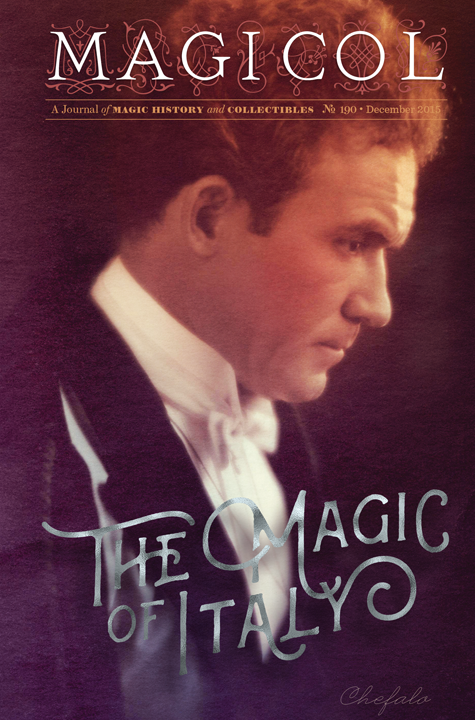
In the past we have dedicated issues to magic and collectibles in Chicago (No. 176), London (No. 178), Australia (No. 182) and Argentina (No. 186). We now turn our attention to Italy. With the immense help of Mauro Massironi, we have assembled a series of articles describing Italian magic collectibles, authors and performers.
William Kalush gives us a peek at some of his favourite Italian collectibles including rare manuscripts, a commemorative token and an early book test. As he points out, Italy was a very productive centre for magic around the sixteenth century and a large amount of our modern magic can be traced back to material published during that period.
Pietro Micheli investigates the life of the famous magician Pinetti. Some readers will recognize Pinetti from his mention in Robert-Houdin’s Memoirs. In the same vein as Houdini, he was a prolific self-promoter and, as you will read, he also had a knack for getting himself into trouble!
Mauro Massironi has conducted new research on Frizzo. This Italian performer is nearly forgotten today, but is said to have been comparable to Bosco, Robert-Houdin and Compars Herrmann as a performer. In this article, Massironi also sets the record straight about several misconceptions about Frizzo which come from earlier attempts at a biography.
Arguably the most famous Italian magician of the twentieth century is Chefalo. Marco Pusterla profiles this Italian-born prolific stage performer who emigrated to the United States and toured the world through the days of Vaudeville and the Second World War.
Gregorio Samà remembers Father Salvatore Cimò, whom one Italian publication referred to affectionately as the “Tarbell of Italian magic literature.” A Jesuit priest, Cimò published books containing hundreds, if not thousands, of tricks at a time when there were only a handful of titles in Italian.
Looking forward to more modern times, after the decline of Fascism in Italy, a group of dedicated close-up performers began importing foreign magic sources and developing their own style of close-up magic. This collaboration between Mauro Massironi, Tony Binarelli, Claudio Pizzuti and Diego Spinelli recounts the formation of an intimate group known as the “Roman Circle” in the 1960s and 70s.
Finally, historian Andrea Boccia extends an invitation to all of our readers to visit his “Museum of Great Dreamers” near Saint Peter’s in Rome.
As you can see, it is quite an issue and we are very pleased that after the American Thanksgiving holiday, it will be in the hopper and soon, in your mailboxes!
Ciao!


